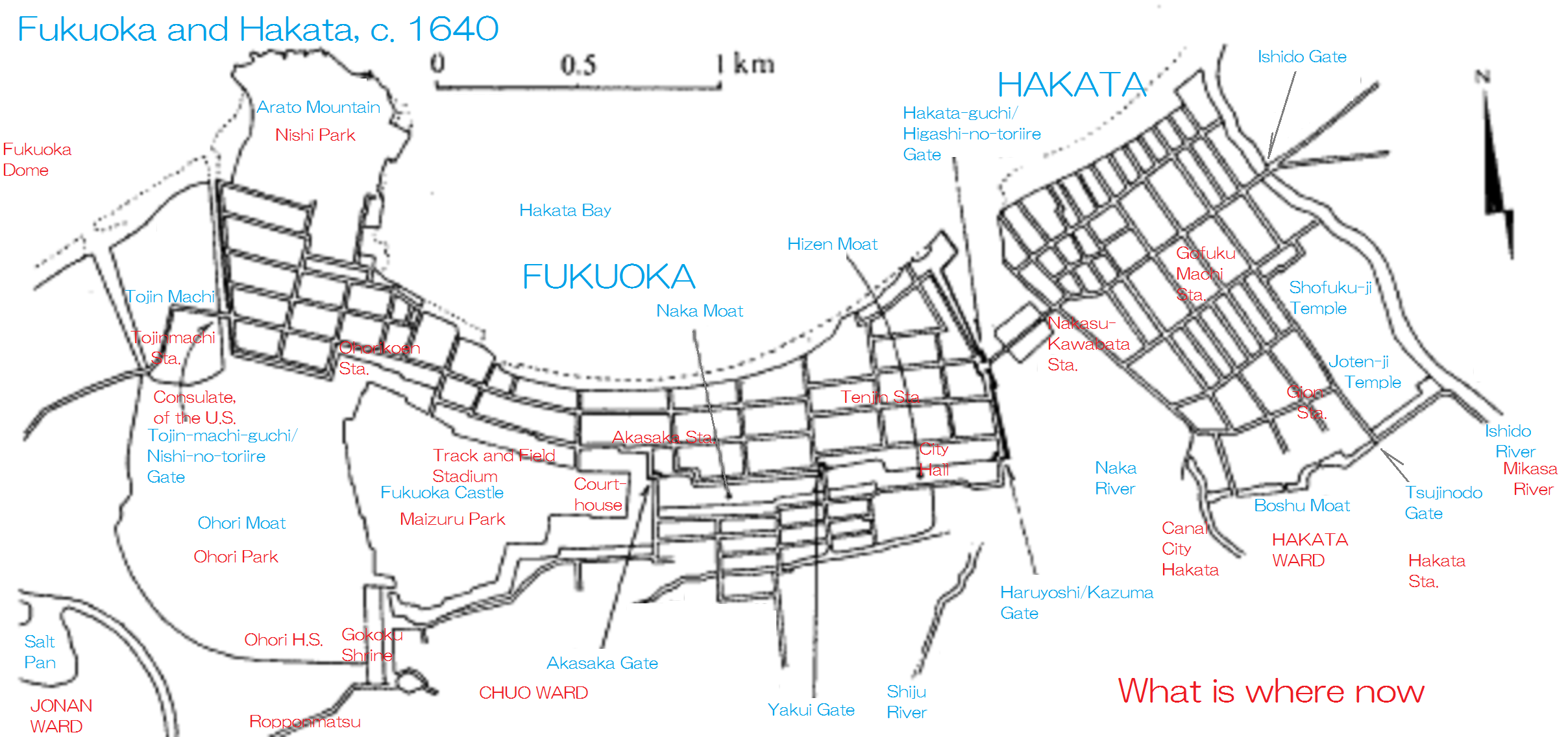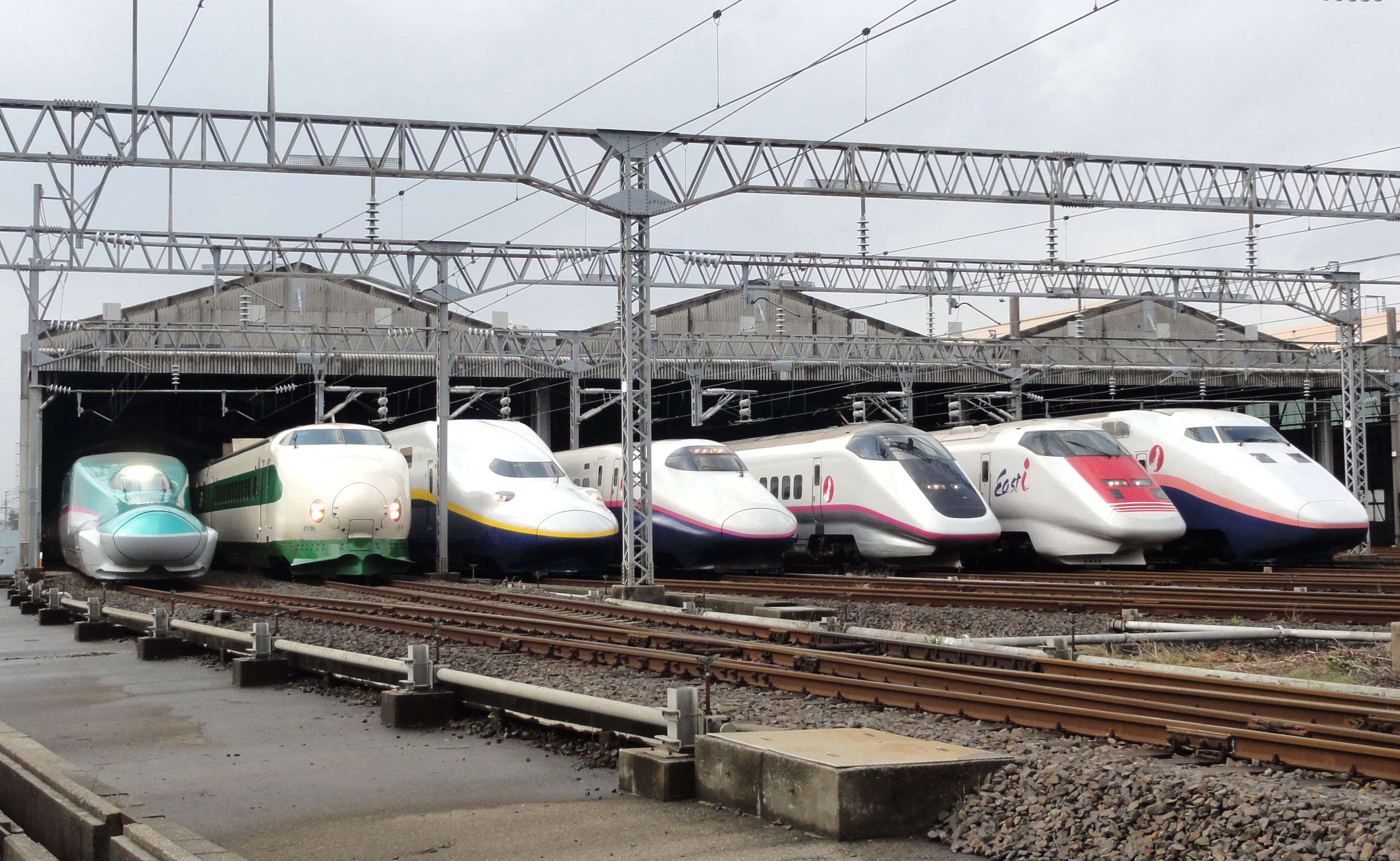|
Super Tokkyū
is the name given to the concept of building new high-speed narrow gauge () railway lines in Japan to extend the Shinkansen network of high-speed lines. No Super Tokkyū routes have actually been built. Concept The Super Tokkyū concept involves building new narrow-gauge lines along the routes of planned Shinkansen lines. All infrastructure would be built to high-speed Shinkansen standards, including its wider loading gauge, 4,000 m minimum curve radius, and total grade separation, with the ability to convert the lines to in the future. Although they would be slower than regular Shinkansen trains, they would have a speed of more than 200 km/h, enabling some reductions in journey times to be achieved, and total construction expenditure could be spread over a longer period, with travel times gradually reduced as more sections are completed. The ultimate goal is eventual conversion to standard-gauge Shinkansen track once the entire line is completed, but with gauge change trains ... [...More Info...] [...Related Items...] OR: [Wikipedia] [Google] [Baidu] |
Narrow Gauge
A narrow-gauge railway (narrow-gauge railroad in the US) is a railway with a track gauge narrower than standard . Most narrow-gauge railways are between and . Since narrow-gauge railways are usually built with tighter curves, smaller structure gauges, and lighter rails, they can be less costly to build, equip, and operate than standard- or broad-gauge railways (particularly in mountainous or difficult terrain). Lower-cost narrow-gauge railways are often used in mountainous terrain, where engineering savings can be substantial. Lower-cost narrow-gauge railways are often built to serve industries as well as sparsely populated communities where the traffic potential would not justify the cost of a standard- or broad-gauge line. Narrow-gauge railways have specialised use in mines and other environments where a small structure gauge necessitates a small loading gauge. In some countries, narrow gauge is the standard; Japan, Indonesia, Taiwan, New Zealand, South Africa, and the Aust ... [...More Info...] [...Related Items...] OR: [Wikipedia] [Google] [Baidu] |
Morioka Station
Morioka Station ( ja, 盛岡駅, ) is a railway station in Morioka, Iwate Prefecture, Japan. It is operated by JR East. Lines Morioka Station is a major junction station, and is served by both the Tōhoku Shinkansen and the Akita Shinkansen. It is located 535.3 km from Tokyo Station. Local JR East services are provided by the Tohoku Main Line, Tazawako Line and Yamada Line, all of which terminate at Morioka Station. The station is also the southern terminus of the third-sector Iwate Ginga Railway Line. Station layout The station has three elevated island platforms for Shinkansen services, and four island platforms for local services. The station has a ''Midori no Madoguchi'' staffed ticket office. Platforms History The station was opened on November 1, 1890, by Japan's first private railway company, Nippon Railway. The line was nationalized in 1906. Services on the Tazawako Line started in 1921, on the Yamada line in 1923, the Tohoku Shinkansen in 198 ... [...More Info...] [...Related Items...] OR: [Wikipedia] [Google] [Baidu] |
Gauge Change Train
The Gauge Change Train (GCT) or is the name given to a Japanese project started in 1994 to develop a high-speed train with variable gauge axles to allow inter-running between the Shinkansen network, and the narrow gauge regional rail network. Two three-car and one four-car "GCT" electric multiple unit (EMU) trains have been built for testing. The first train operated from 1998 until 2006, the second train operated from 2006 until 2014 and the third-generation train commenced testing in 2014, although testing is currently suspended due to technical issues with the bogies. The GCT was due to be introduced on the Nagasaki Shinkansen upon its scheduled opening in fiscal 2022, but JR Kyushu announced in June 2017 that it had abandoned plans to adopt the GCT for these services. First-generation train (1998–2006) The first GCT train was completed in October 1998. It was designed to be able to run at a maximum speed of over on Shinkansen lines, and at over on conventional narrow-g ... [...More Info...] [...Related Items...] OR: [Wikipedia] [Google] [Baidu] |
Hakata-ku, Fukuoka
is a ward of the city of Fukuoka in Fukuoka Prefecture, Japan. Many of Fukuoka Prefecture and Fukuoka City's principal government, commercial, retail and entertainment establishments are located in the district. Hakata-ku is also the location of Fukuoka's main train station, Hakata Station, Fukuoka Airport and the Hakata Port international passenger ship terminal. Geography Hakata-ku is a ward of Fukuoka City located on its eastern edge. It is 31.47 km2 with a population of 206,629 (current January 1, 2009). Much of the ward consists of low-lying plains beside the . The northwestern end of the ward faces Hakata Bay, which includes both ferry and international cruise ship terminals . The northeast end of the ward is slightly elevated, and is named , with nearby Fukuoka Airport. Around Hakata Station is downtown; is the main dining and entertainment district of the ward along the . Hakata-ku also houses the Fukuoka Prefectural office. Economy Many Japanese companies have ... [...More Info...] [...Related Items...] OR: [Wikipedia] [Google] [Baidu] |
Nagasaki Station (Nagasaki)
is a railway station in Nagasaki, Nagasaki Prefecture, Japan, operated by the Kyushu Railway Company (JR Kyushu). It is the terminus of the Nishi Kyushu Shinkansen and the Nagasaki Main Line. The station is connected by the ''Kamome'' Shinkansen service and the '' Relay Kamome'' limited express to Hakata, and by the ''Seaside Liner'' rapid service to Sasebo. Nagasaki Electric Tramway services call at a stop in front of the station. Lines * Nishi Kyushu Shinkansen * Nagasaki Main Line Station layout The conventional line station has two elevated island platforms serving five tracks. The Shinkansen station has two island platforms serving four tracks. Platforms History The station was opened on 5 April 1905 when the railway was extended from the former Nagasaki Station to the present station. The former station, opened in 1897, was renamed Urakami Station. *5 April 1905 - Opened by Kyushu Railway. *1 July 1907 - The railways are nationalized and the station becomes part o ... [...More Info...] [...Related Items...] OR: [Wikipedia] [Google] [Baidu] |
Nagano Station
is a railway station in the city of Nagano in Nagano Prefecture, Japan. The station is operated by East Japan Railway Company (JR East) and the private railway operator Nagano Electric Railway (Nagaden). Lines Nagano Station is served by the following lines. *JR East **Hokuriku Shinkansen (branded "Nagano Shinkansen" until March 2015), on which it is 222.4 kilometers from Tokyo Station **Shinetsu Main Line ** Shinonoi Line **Iiyama Line * Shinano Railway Line * Nagano Electric Railway Nagano Line Station layout The JR East portion of the station has two elevated island platforms for the Shinkansen services, and three ground-level island platforms for local services, including onward services by Kita-Shinano Line trains. The station has a "Midori no Madoguchi" staffed ticket office. Nagano Station Zenkoji exit.jpg, Nagano Station Zenkoji Entrance 長野駅 - panoramio (16).jpg, Nagano Station East Entrance Nagano st02s2048.jpg, Concourse of JR station NER Nagano station.JPG, ... [...More Info...] [...Related Items...] OR: [Wikipedia] [Google] [Baidu] |
Hokuriku Shinkansen
The is a high-speed Shinkansen railway line jointly operated by East Japan Railway Company (JR East) and West Japan Railway Company (JR West), connecting Tokyo with in the Hokuriku region of Japan. The first section, between and in Nagano Prefecture, opened on 1 October 1997, originally called the (Takasaki is linked to Tokyo by the Jōetsu Shinkansen). The extension to in Toyama Prefecture and in Ishikawa Prefecture opened on 14 March 2015. Construction of a further section onward to and in Fukui Prefecture commenced in 2012, with scheduled opening in Spring 2024. The route of the final section to Shin-Osaka was decided on 20 December 2016 as the Osaka–Kyoto route, with construction expected to begin in 2030 and take 15 years. Train names and service patterns Since March 2015, services on the line are split into four types, with train names as listed below. Trains operate over the Joetsu and Tohoku Shinkansen tracks between Tokyo and Takasaki. * ''Kagayaki'': Toky ... [...More Info...] [...Related Items...] OR: [Wikipedia] [Google] [Baidu] |
Seikan Tunnel
The Seikan Tunnel ( ja, 青函トンネル, or , ), is a dual-gauge railway tunnel in Japan, with a portion under the seabed of the Tsugaru Strait, which separates Aomori Prefecture on the main Japanese island of Honshu from the northern island of Hokkaido. The track level is about below the seabed and below sea level. The tunnel is part of the standard-gauge Hokkaido Shinkansen and the narrow-gauge Kaikyō Line of the Hokkaido Railway Company (JR Hokkaido)'s Tsugaru-Kaikyō Line. The name ''Seikan'' comes from combining the ''on'yomi'' readings of the first characters of , the nearest major city on the Honshu side of the strait, and , the nearest major city on the Hokkaido side. The Seikan Tunnel is the world's longest undersea tunnel by overall length (the Channel Tunnel, while shorter, has a longer undersea segment). It is also the second-deepest transport tunnel below the sea level after the Ryfylke Tunnel, a road tunnel in Norway which opened in 2019, and the second l ... [...More Info...] [...Related Items...] OR: [Wikipedia] [Google] [Baidu] |
Hakodate Station
is a railway station on the Hakodate Main Line in Hakodate, Hokkaido, Japan, operated by the Hokkaido Railway Company (JR Hokkaido). Lines *South Hokkaido Railway Company Dōnan Isaribi Tetsudō Line (Normally ends at Goryōkaku, but trains generally serve Hakodate as well) *Hakodate Main Line *Tsugaru-Kaikyō Line (Former) Hakodate Station is the terminus of the Hakodate Main Line and the former Tsugaru-Kaikyō Line; Hakodate Municipal Transit streetcars stop at the adjacent Hakodate Eki-mae Station. Train services In addition to local services, the following long-distance trains serve Hakodate Station. *''Hokuto'' and ''Super Hokuto'' limited express to Sapporo The following services ended in March 2016 due to the Hokkaido Shinkansen's opening From Shin-Hakodate-Hokuto Station to Shin-Aomori Station, which is takes a similar route of the Hakuchō\Super Hakuchō. All services go through to Tokyo station, which means the two former sleeper trains had to be discontinued due ... [...More Info...] [...Related Items...] OR: [Wikipedia] [Google] [Baidu] |
Shinkansen
The , colloquially known in English as the bullet train, is a network of high-speed railway lines in Japan. Initially, it was built to connect distant Japanese regions with Tokyo, the capital, to aid economic growth and development. Beyond long-distance travel, some sections around the largest metropolitan areas are used as a commuter rail network. It is operated by five Japan Railways Group companies. Over the Shinkansen's 50-plus-year history, carrying over 10 billion passengers, there has been not a single passenger fatality or injury on board due to derailments or collisions. Starting with the Tokaido Shinkansen () in 1964, the network has expanded to currently consist of of lines with maximum speeds of , of Mini-Shinkansen lines with a maximum speed of , and of spur lines with Shinkansen services. The network presently links most major cities on the islands of Honshu and Kyushu, and Hakodate on northern island of Hokkaido, with an extension to Sapporo under constru ... [...More Info...] [...Related Items...] OR: [Wikipedia] [Google] [Baidu] |
Kagoshima-Chūō Station
is a major railway station in Kagoshima, Japan, operated by Kyushu Railway Company (JR Kyushu). It is the main railway terminal serving Kagoshima, the southern terminus of the Kyushu Shinkansen and is located on the Kagoshima Main Line and Ibusuki-Makurazaki Line. Before the Kyushu Shinkansen opened in 2004, the station was called Nishi-Kagoshima Station (lit: West Kagoshima Station). It is also the southernmost high-speed Shinkansen railway terminal in Japan. Lines Kagoshima-Chūō Station is served by the following JR Kyushu lines. *Kyushu Shinkansen *Kagoshima Main Line *Ibusuki-Makurazaki Line The Kyushu Shinkansen tracks and platforms are perpendicular to the Kagoshima Main and Ibusuki-Makurazaki tracks and platforms. Platforms Limited Express trains * ''Kirishima (train), Kirishima'' - Nippō Main Line * ''Ibusuki no Tamatebako'' - Ibusuki Makurazaki Line Liner and Rapid trains * ''Nanohana'' - Ibusuki Makurazaki Line * ''Ocean Liner Satsuma'' - Kagoshima Main ... [...More Info...] [...Related Items...] OR: [Wikipedia] [Google] [Baidu] |
.jpg)



